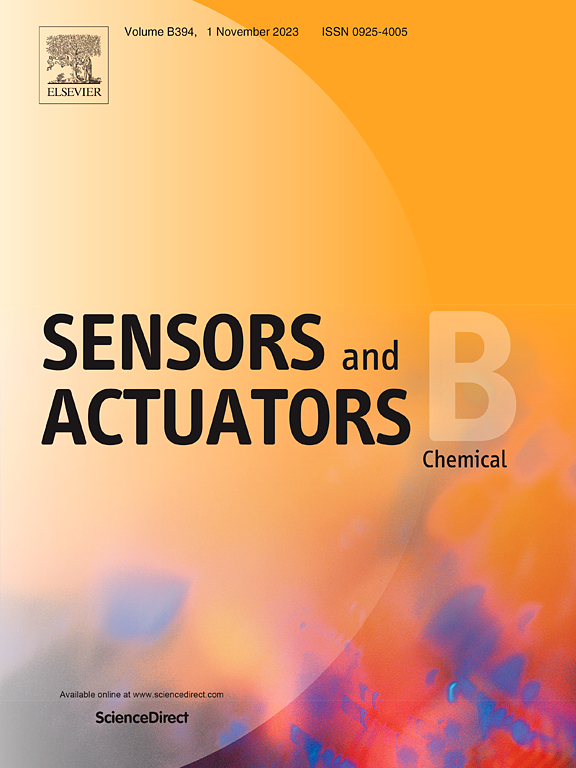Dual-ratiometric fluorescent aptasensor based on gold nanoclusters and dual-amplification strategy for simultaneous detection of ochratoxin A and aflatoxin B1
IF 3.7
1区 化学
Q1 CHEMISTRY, ANALYTICAL
引用次数: 0
Abstract
In this study, two kinds of gold nanoclusters (AuNCs) with fluorescent properties were synthesized as internal reference signals, while the label-free fluorescent dyes N-methylporphyrin dipropionate IX (NMM) and SYBR Green I (SGI) were used as the response signals. Dual ratiometric fluorescent aptasensor was established for the simultaneous detection of ochratoxin A (OTA) and aflatoxin B1 (AFB1). The aptamer and complementary strands of two targets can self-assemble to form Y-shaped DNA nanostructures. When the target was present, the target can specifically bind to its aptamer and release complementary DNA. The complementary DNA can be used as an initiator strand to trigger the amplification reaction of hybridization chain reaction (HCR) and catalytic hairpin assembly (CHA). Fluorescent signals were then produced by the addition of SGI and NMM. The ratio of the fluorescent signals generated by SGI and NMM to the fluorescent signals generated by the two AuNCs can be used to quantitatively detect OTA and AFB1. The dual ratiometric fluorescent aptasensor has good specificity and accuracy. Under optimal experimental conditions, the linear ranges of OTA and AFB1 were 0.05–200 ng/mL, and the detection limits were 6.7 pg/mL and 8.6 pg/mL, respectively. The developed aptasensor was successfully applied to detect mycotoxins in real samples, confirming the favorable practicality.
基于金纳米团簇和双扩增策略的双比例荧光传感器同时检测赭曲霉毒素A和黄曲霉毒素B1
本研究合成了两种具有荧光性质的金纳米簇(aunc)作为内参信号,以无标记荧光染料n -甲基卟啉二丙酸IX (NMM)和SYBR Green I (SGI)作为响应信号。建立双比例荧光配体传感器,用于同时检测赭曲霉毒素A (OTA)和黄曲霉毒素B1 (AFB1)。两个靶标的适配体和互补链可以自组装形成y形的DNA纳米结构。当靶标存在时,靶标可以特异性地与其适配体结合并释放互补DNA。互补DNA可以作为引发链触发杂交链反应(HCR)和催化发夹组装(CHA)的扩增反应。然后通过添加SGI和NMM产生荧光信号。SGI和NMM产生的荧光信号与两种aunc产生的荧光信号之比可用于定量检测OTA和AFB1。该双比例荧光适体传感器具有良好的特异性和准确性。在最佳实验条件下,OTA和AFB1的线性范围为0.05 ~ 200 ng/mL,检出限分别为6.7 pg/mL和8.6 pg/mL。该传感器已成功地应用于实际样品中真菌毒素的检测,证实了其良好的实用性。
本文章由计算机程序翻译,如有差异,请以英文原文为准。
求助全文
约1分钟内获得全文
求助全文
来源期刊

Sensors and Actuators B: Chemical
工程技术-电化学
CiteScore
14.60
自引率
11.90%
发文量
1776
审稿时长
3.2 months
期刊介绍:
Sensors & Actuators, B: Chemical is an international journal focused on the research and development of chemical transducers. It covers chemical sensors and biosensors, chemical actuators, and analytical microsystems. The journal is interdisciplinary, aiming to publish original works showcasing substantial advancements beyond the current state of the art in these fields, with practical applicability to solving meaningful analytical problems. Review articles are accepted by invitation from an Editor of the journal.
 求助内容:
求助内容: 应助结果提醒方式:
应助结果提醒方式:


